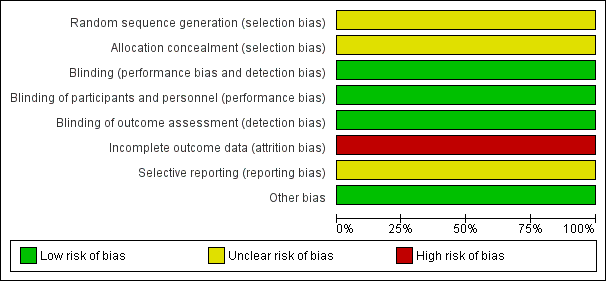Contenido relacionado
Revisiones y protocolos relacionados
Emma Molyneaux, Louise M Howard, Helen R McGeown, Amar M Karia, Kylee Trevillion | 11 septiembre 2014
Jennifer Valeska Elli Brown, Claire A Wilson, Karyn Ayre, Lindsay Robertson, Emily South, Emma Molyneaux, Kylee Trevillion, Louise M Howard, Hind Khalifeh | 13 febrero 2021
Ingrid Eshun‐Wilson, Nandi Siegfried, Dickens H Akena, Dan J Stein, Ekwaro A Obuku, John A Joska | 22 enero 2018
Bruce Arroll, C Raina Elley, Tana Fishman, Felicity A Goodyear‐Smith, Tim Kenealy, Grant Blashki, Ngaire Kerse, Stephen MacGillivray | 8 julio 2009
Justyna Pollok, Joep EM van Agteren, Kristin V Carson‐Chahhoud | 19 diciembre 2018
Masuma Pervin Mishu, Eleonora Uphoff, Faiza Aslam, Sharad Philip, Judy Wright, Nilesh Tirbhowan, Ramzi A Ajjan, Zunayed Al Azdi, Brendon Stubbs, Rachel Churchill, Najma Siddiqi | 16 febrero 2021
Joanna Moncrieff, Simon Wessely, Rebecca Hardy | 26 enero 2004
Taryn Amos, Dan J Stein, Jonathan C Ipser | 8 julio 2014
Catherine A Forneris, Barbara Nussbaumer‐Streit, Laura C Morgan, Amy Greenblatt, Megan G Van Noord, Bradley N Gaynes, Jörg Wipplinger, Linda J Lux, Dietmar Winkler, Gerald Gartlehner | 24 mayo 2019
Georgina R Cox, Caroline A Fisher, Stefanie De Silva, Mark Phelan, Olaoluwa P Akinwale, Magenta B Simmons, Sarah E Hetrick | 14 noviembre 2012








